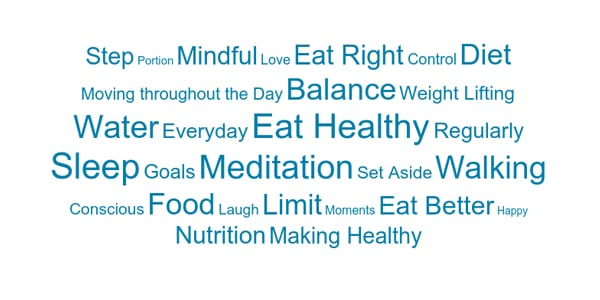It’s February 1. If you’re like 80 percent of the population, any New Year’s resolution you made is probably buried at the back of the closet – along with your workout gear. Or if you’re like the 100-plus colleagues I recently polled, more than half of you didn’t even make a New Year’s resolution.
That’s ok, though. While intentionally taking steps to improve your life is always going to be a good thing, it’s no longer about the quick fix. One-and-done resolutions are so… last month. Today, there is a movement rapidly gaining ground worldwide that is all about being in it for the long haul. It’s about being healthy in body and mind. Instead of a New Year’s resolution, think “all-year resolution.”
What I’m referring to is the wellness movement. And make no mistake about it – wellness is a movement, not a moment. Consumer spending trends all point in a single upward direction. In fact, the Global Wellness Institute estimates the worldwide wellness market to be $3.72 trillion. Trillion, with a T. This represents 10.6 percent growth from 2013 to 2015, at a time when the global economy shrank 3.6 percent.
Among Gen Z and millennials, Ypulse data on New Year’s resolutions shows that “being happier” and “reducing stress” were right up there among the top four resolutions with losing weight and getting or staying physically fit.
My unofficial colleague poll here at Ketchum backs this up. Wellness is not just the purview of Gwyneth Paltrow and Goop; it’s for all of us. Among the professionals we polled:
- 90 percent rate wellness as important or very important
- 63 percent would be somewhat or very likely to buy a product or service if they thought it would improve their wellness
- 100 percent said their interest in wellness either increased (74 percent) or remained the same (26 percent) over the past year. Zero people are losing interest
 With wellness fast becoming a way of life, it represents a rich opportunity for brands across a number of industry sectors.
With wellness fast becoming a way of life, it represents a rich opportunity for brands across a number of industry sectors.
As communications professionals, we can help brands be relevant to wellness consumers. But not by using traditional brand marketing approaches. Success in this market is about first understanding the very specific attitudes, purchase habits and influences on behavior that are unique to the wellness movement.
It’s about understanding that wellness is not the same thing as health. Wellness is a deliberate pursuit of physical, spiritual and emotional well-being.
It’s also about abandoning stereotypes regarding the typical wellness consumer. #funfact: wellness is a guy thing, too.
The men in our unofficial poll rated wellness as important as the women do. Their wellness actions are more motivated by family than women’s are. And when asked what kinds of things they do to make wellness a part of their life, our myth-busting males listed everything from meditation to dental care to powering down the technology at night.
Whether you’re a communications professional working with a brand targeting the wellness market, or you’re just interested in wellness for yourself, know that you’re part of a massive movement. It’s one that is only going to keep growing and evolving in literally life-changing ways.
Now back to that all-year resolution. For me, shifting my mindset from New Year’s resolutions to all-year resolutions has been liberating. I no longer feel the stern presence of a “stop this” or “start that” list over my head. Now each day I just think about how I can do better and feel better for the next 24 hours.
As a mom, one of my “all-year wellness goals” in 2018 is more meaningful sleep. As a brand marketing professional, my goal is to help more companies assist consumers on their wellness journey. For a lifetime, not a moment.


